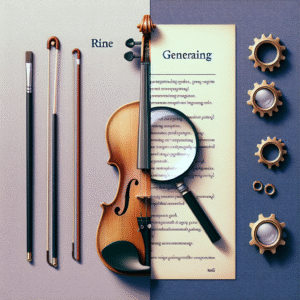Have you ever thought about how advanced technologies are reshaping the way we manage and optimize supply chains?
Understanding Industry 4.0
In recent years, the term “Industry 4.0” has gained a lot of attention, but what does it actually mean? At its core, Industry 4.0 refers to the fourth industrial revolution, characterized by the integration of digital technologies, artificial intelligence, and data analytics into manufacturing and supply chain processes. This new wave of innovation is not just about automation; it’s about creating smart factories and connected supply chains that can communicate and adapt to changes in real time.
As I navigate through this rapidly changing landscape, I can’t help but feel excited about the opportunities that lie ahead. Industry 4.0 is all about improving efficiency, reducing costs, and creating more agile supply chains. So, let’s break it down further.
The Pillars of Industry 4.0
To understand how Industry 4.0 transforms supply chains, it’s crucial to familiarize myself with its fundamental components:
1. IoT (Internet of Things)
The Internet of Things is a significant player in Industry 4.0. It involves connecting physical devices to the internet, allowing them to collect and exchange data. In supply chains, IoT devices can track inventory levels, monitor equipment health, and even predict maintenance needs.
For instance, imagine a scenario where my warehouse is equipped with smart sensors that continuously monitor stock levels. If supplies are running low, the system automatically sends alerts, enabling me to reorder before I run out.
2. Big Data and Advanced Analytics
Data is the new gold in today’s business landscape. Industry 4.0 leverages big data and advanced analytics to make sense of vast amounts of information generated by different supply chain activities. By analyzing this data, I can gain insights into customer behavior, demand patterns, and operational inefficiencies, ultimately enhancing decision-making processes.
For example, through predictive analytics, I can forecast customer demand more accurately, reducing excess inventory and optimizing stock levels.
3. Cyber-Physical Systems (CPS)
Cyber-physical systems bridge the physical and digital worlds. In my supply chain, these systems can take the form of smart robots that collaborate with human workers or automated transport vehicles moving goods without human intervention.
These technologies not only improve efficiency but also ensure enhanced safety in the workplace. Safety protocols can be built into these systems, allowing real-time monitoring of critical operational parameters.
4. Artificial Intelligence (AI) and Machine Learning
AI and machine learning technologies are revolutionizing how I approach supply chain management. These tools can analyze historical data, identify trends, and provide actionable recommendations for optimizing processes.
For instance, AI-powered algorithms can optimize routing for delivery trucks, predict delays, and suggest alternative routes to ensure timely deliveries, ultimately enhancing customer satisfaction.
5. Cloud Computing
Cloud computing provides the infrastructure necessary to support the data-intensive needs of Industry 4.0. It enables real-time data access and collaborative tools that facilitate seamless communication across teams and stakeholders within the supply chain.
I can access cloud-based platforms to track shipments in real-time or collaborate with suppliers effortlessly, regardless of location.
Benefits of Industry 4.0 in Supply Chain Management
When implementing Industry 4.0 technologies in my supply chain, I’m not just modernizing; I’m unlocking a plethora of benefits:
Increased Efficiency
One of the most significant advantages I experience is improved operational efficiency. Automating mundane tasks allows my team to focus on more strategic initiatives. Real-time data helps identify bottlenecks, enabling rapid problem-solving.
Cost Reduction
With enhanced efficiency comes cost savings. By streamlining operations and using data to minimize waste, I can significantly cut down on expenses across the supply chain. It’s not only about reducing operational costs but also improving my overall bottom line.
Enhanced Flexibility
The dynamic nature of today’s markets requires a flexible supply chain. Industry 4.0 enables me to adapt quickly to changes in demand or supply disruptions. I can pivot my strategy in real-time to meet customer needs without being weighed down by legacy systems.
Improved Visibility
Transparency throughout the supply chain is vital. With IoT and data analytics, I gain better visibility into every aspect of my operations. I can monitor inventory levels, track shipments, and assess supplier performance—all from a single dashboard.
Better Customer Experience
In an era where customer expectations are evolving constantly, Industry 4.0 equips me with the tools to enhance customer service. By leveraging data analytics, I can anticipate customer needs and respond more swiftly, ultimately fostering loyalty.
Challenges in Adopting Industry 4.0 Technologies
While the benefits are numerous, I also recognize the challenges that come with implementing Industry 4.0 in my supply chain:
Resistance to Change
Change can be daunting. Employees may resist new technologies out of fear of job displacement or a lack of understanding. It’s crucial for me to foster a culture of innovation by providing training and clear communication about the benefits of these changes.
High Initial Investment
The cost associated with implementing advanced technologies can be a barrier for many businesses, including mine. It’s essential to evaluate the long-term ROI of these investments, understanding that the upfront costs could yield significant savings over time.
Data Security Concerns
With digital connectivity comes the risk of cyber threats. Maintaining robust cybersecurity measures is paramount to safeguard sensitive data. I need to establish stringent protocols and conduct regular audits to ensure data safety.
Integration of Legacy Systems
Many supply chains still rely on outdated systems that may not seamlessly integrate with new technologies. Finding the right balance between upgrading existing infrastructure and implementing new solutions can be challenging, but it’s essential for success.
Case Studies: Success Stories in Industry 4.0
Case Study 1: BMW
BMW’s use of Industry 4.0 practices in its production facilities exemplifies the transformative potential of this approach. By integrating IoT devices, the company has developed a smart factory that collects data on machinery performance and production efficiency.
With predictive maintenance, BMW reduces downtime and increases productivity. The company can anticipate when equipment needs servicing, allowing operations to run smoothly without unexpected interruptions.
Case Study 2: Procter & Gamble (P&G)
P&G stands out for its innovative supply chain strategies. The company employs big data analytics to understand consumer preferences and market trends. This insight allows P&G to streamline its inventory management and optimize production schedules based on real-time demand analysis.
The result has been a more responsive supply chain, reduced costs, and improved customer satisfaction, ensuring that products are available when and where they’re needed.
Case Study 3: Amazon
Amazon has transformed e-commerce through its advanced supply chain operations powered by Industry 4.0 technologies. With the use of robotics, data analytics, and AI, Amazon achieves unmatched efficiency in order fulfillment.
Their automated warehouses allow for rapid order processing, reducing shipping times and improving customer experience. The company’s recommendation algorithms enhance personalized shopping experiences, fostering customer loyalty.
The Future of Supply Chains in the Age of Industry 4.0
The future of supply chains is bright, given the ongoing advancements in Industry 4.0 technologies. As I envision what’s next, I can’t help but think of a hyper-connected world where supply chains operate seamlessly across borders and industries.
Emphasis on Sustainability
In the coming years, sustainability will take center stage. I foresee supply chains adopting greener practices—reducing waste, optimizing energy use, and implementing circular economy principles. With sustainable practices becoming more critical, I can focus on aligning my supply chain operations with environmental considerations.
Greater Personalization
Customers are gravitating toward personalized experiences. I anticipate that supply chains will further leverage data analytics and AI to offer customized products and services, resulting in a more engaging customer journey.
Expanded Global Collaboration
Globalization will continue to shape supply chains. I imagine a future where collaborative networks enable organizations to share resources, knowledge, and technologies, driving efficiencies across different sectors.
Resilience and Risk Management
The lessons learned from recent global disruptions have highlighted the need for resilient supply chains. I expect organizations to invest in technologies that provide real-time insights, enabling proactive risk management and contingency planning.
Conclusion
Adopting Industry 4.0 technologies in my supply chain is transformative, introducing new efficiencies and opportunities for growth. With the right approach, I can navigate the challenges and fully harness the potential of this industrial revolution. It’s not just about implementing new technologies; it’s about fostering a culture of innovation, collaboration, and agility. As I move forward, I welcome the future and look forward to the continued evolution of supply chains in this exciting era.






